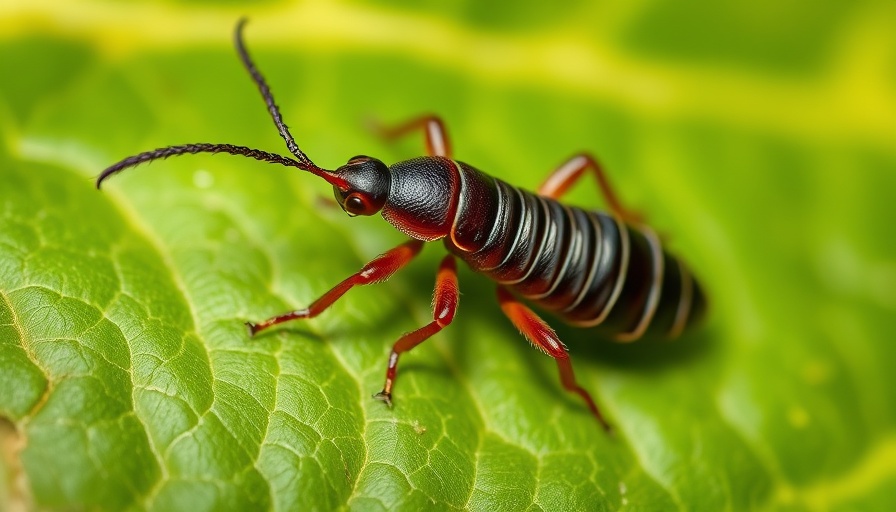
Understanding Earwigs: Friends or Foes?
For many of us, encountering earwigs can trigger a mix of fear and curiosity. Known scientifically as Forficula auricularia, these insects belong to the order Dermaptera, which consists of approximately 2,000 species worldwide. While their reputation as pests is well-deserved due to their tendency to chew on garden plants, they also play a role as scavengers, helping to break down organic matter.
Identifying Earwigs in Your Garden
Earwigs are easily identifiable by their shiny, reddish-brown bodies and pinching pincers, or cerci, at the end of their elongated bodies. While many gardeners mistakenly believe they are exclusively harmful, it's important to remember that not all earwig species are detrimental to plant health. Some, such as the tawny or striped earwig (Labidura riparia), primarily feed on other insects and may even contribute to pest control.
Biology and Life Cycle: What We Should Know
The life cycle of earwigs comprises a series of intriguing stages, from egg to mature insect. Typically, adult earwigs can be found in moist environments, as they thrive in damp soil, mulch, and compost piles, where they can easily find food sources. Understanding their reproductive habits can also aid in effective garden management; female earwigs lay eggs in small nests within sheltered spots. Awareness of these breeding habits can help gardeners keep their earwig populations in check.
Organic Control Methods for Earwigs
While chemical solutions are numerous, organic methods are preferable for those looking to maintain a healthy garden ecosystem. One effective strategy is to create barriers using diatomaceous earth or coffee grounds, which deter earwigs. Additionally, maintaining a clean garden environment by removing decaying organic matter can reduce earwig attraction. Introducing beneficial insects can further help manage populations naturally.
Chemical Control: When All Else Fails
For instances where earwig infestations become severe, chemical solutions may be necessary. There are several commercially available insecticides designed specifically for earwigs. However, it’s crucial to opt for products that are labeled safe for garden use to minimize harm to beneficial insects and pollinators.
Future Insights: Gardening in a Changing World
As climate change reshapes our gardens, understanding the role of pests like earwigs is vital. Warmer temperatures may lead to an increase in pest populations, underscoring the importance of integrated pest management strategies that combine both organic and chemical controls. Embracing pest-resistant plants alongside traditional varieties can provide a buffer against these pesky invaders.
Practical Insights and Tips for Home Gardeners
There’s great satisfaction in cultivating your own food, and keeping pests at bay is a fundamental part of successful gardening. Start by selecting pest-resistant plants suited to your local climate and soil. Integrating diverse crops can also help deter pests naturally. Regularly inspecting foliage and stems for signs of damage will allow for swift interventions, ensuring that your garden remains productive.
Conclusion: Empowering Gardeners Through Knowledge
With the right information and strategies, managing earwig populations in your garden can turn from a daunting task to an achievable goal. Embrace the role of knowledgeable steward of your garden’s ecosystem, and you'll not only cultivate beautiful plants but also foster a vibrant community of life within your green spaces. Ready to get started? Explore the right pest management methods for your specific gardening needs and discover the joy of nurturing your own food. Summer is just around the corner; it's the perfect time to dive into the world of organic gardening!
 Add Row
Add Row  Add
Add 




 Add Row
Add Row  Add
Add 

Write A Comment